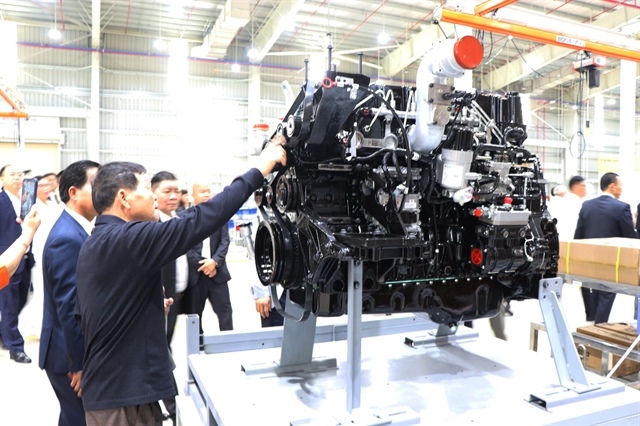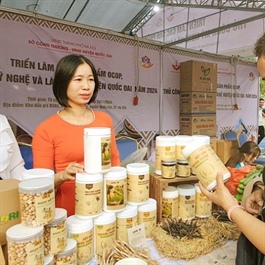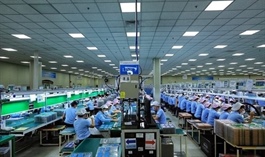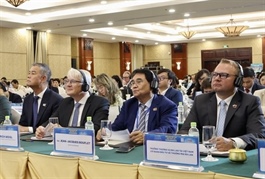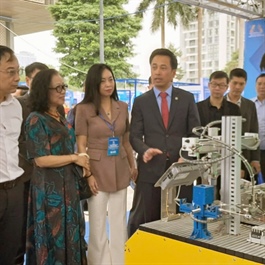Processing, manufacturing industry needs to further penetrate global supply chains
Processing, manufacturing industry needs to further penetrate global supply chains
Experts believe that enterprises in the domestic processing and manufacturing industry need more solutions to further penetrate the global supply chains.
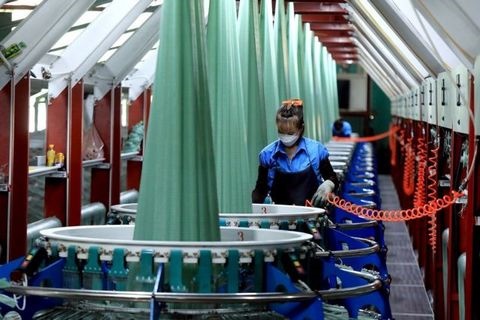
Workers at work in a garment company.The localisation rate of many key industrial sectors, such as garments, has been low, depending heavily on the import of raw materials. — VNA/VNS Photo |
Dr Nguyễn Minh Phong, an economist, says that the processing and manufacturing industry is a large industry with many small groups and sub-industries. Of which, there are eight groups of industries contributing greatly to the development of the processing and manufacturing industry, including chemicals, rubber, plastics, textiles, footwear, food and beverage, forestry, and electronics.
In the context of declining exports to major markets, the processing and manufacturing industry has diversified into new markets such as African countries, northern and eastern Europe and west Asia, Phong says.
The structure of export goods continues to improve in a positive direction. The country has reduced raw exports and increased exports of the processing and manufacturing industry's goods, creating conditions for Vietnamese goods to participate more deeply in the global supply chains, he says.
However, according to Phong, the processing and manufacturing industry has not yet fully exploited its potential. For some key export items to major markets such as the EU and US, expanding markets for industrial enterprises continues to face difficulties.
The scale of Vietnamese supporting industry enterprises is mainly small and micro, so most of them have low technology and management levels and limited human resources, leading to difficulties in meeting high requirements of partners in terms of standards, quality, price and delivery time.
In addition, Phong points out that the annual innovation rate of machinery and equipment has only reached about 10 per cent in the past five years, while that rate in other regional countries was about 15-20 per cent.
The localisation rate of many industrial sub-sectors has been low, depending heavily on the import of raw materials, machinery and equipment. Key export industries, such as textiles, footwear and electronics, have imported 60-70 per cent of raw materials.
"The lack of connection between enterprises is also hindering the development of supporting industries. So, the domestic enterprises have not yet deeply participated in the ecosystem and value chains of large enterprises and foreign firms," Phong says.
In addition, domestic enterprises have implemented only the processing and assembly stages, not focusing on new and high-tech industries. They have lacked integration capacity and used outdated technologies.
Chu Việt Cường, director of the Centre for Industrial Development Support (IDC), under the Department of Industry of the Ministry of Industry and Trade, says that one of the enterprises' difficulties today is high costs across many fields.
Of which, the issue of high input material costs is due to many reasons, such as dependence on foreign supplies. Many manufacturing companies have to import raw materials and components due to the lack of domestic supplies.
This dependence increases costs due to higher raw material prices, especially in the context of global economic instability, diseases and geopolitical crises, Cường says.

The packaging production line of a company in Nghệ An Province. Vietnamese enterprises should actively research the market and listen to partner feedback to enhance their products and expand their reach. — VNA/VNS Photo Tuấn Anh |
In addition, transport, warehousing and logistics costs relating to the raw material imports have also increased, especially during periods of fuel price increase and disruptions in global supply chains.
The prices of raw materials such as metals, chemicals and agricultural products have also risen because of high demands from many major producing countries, especially China and developing markets, he says.
The cost of complying with international standards is high because international markets, especially the US, EU and Japan, require businesses to comply with standards on quality, labour safety, environment, and social responsibility.
Compliance with these standards requires businesses to make large investments in infrastructure, equipment and inspection processes.
At the same time, high costs have made it hard for export industrial enterprises to expand production scale or invest in new technology, leading to delays in penetrating new markets and diversifying products.
Meanwhile, Cao Văn Hùng, director of International Market Development of Smart Vietnam Precision Mechanical JSC, says that, the first difficulty for the domestic enterprises is high-quality human resources.
Meeting the needs of the market and customers at present requires a large human resource, especially those directly involved in production activities.
In addition, foreign partners have very high demands for quality, requiring businesses to know how to connect with related partners to create a finished product. However, finding suitable partners is a difficult task.
Vietnamese enterprises also lack information about markets, customers and policies of partner countries, Hùng says.
Regarding solutions, he says the businesses need to have a mechanism for investment in human resources and supportive policies of material and spirit for workers, especially skilled workers.
Vietnamese enterprises also need to directly research the market and listen to feedback from partners, thereby being able to improve products and expand the market.
Regarding policies, Hùng also proposes that the Government, ministries, branches and associations need to support the businesses in exporting goods to demanding markets. They should regularly organise seminars, forums and exhibitions, to give the businesses the opportunities of securing market update, partner information and new business activities.
According to Cường, the State has been offering financial support packages or tax incentives to help businesses reduce costs in complying with international standards.
They have established domestic quality inspection centres meeting international standards to reduce costs and time for the businesses and built training programmes on quality management and compliance with international standards.
Cường has also recommended that the businesses invest in research and development (R&D) to find and develop alternative domestic raw material sources, reducing dependence on imports.
They should optimise the supply chain to reduce transport costs and delivery times and use advanced production technologies to minimise material waste and improve production efficiency.
In addition, the businesses should invest in product innovation, increase the value of products by improving quality and features and cooperate with FDI enterprises to access resources and advanced technology, Cường says.
To support processing and manufacturing enterprises to promote exports in the global supply chains, the Ministry of Industry and Trade and Vietnamese trade offices abroad should strengthen trade promotion and expand the market for products of this industry.


